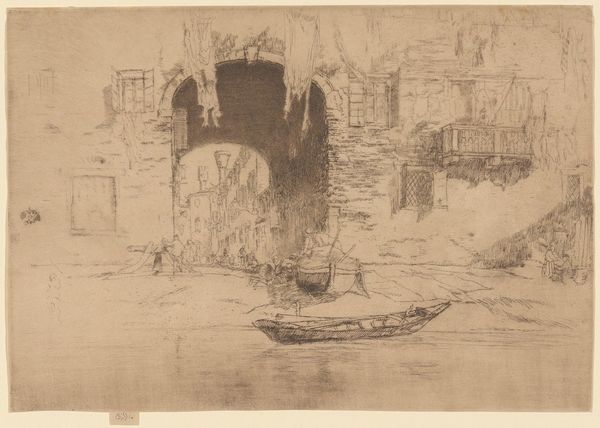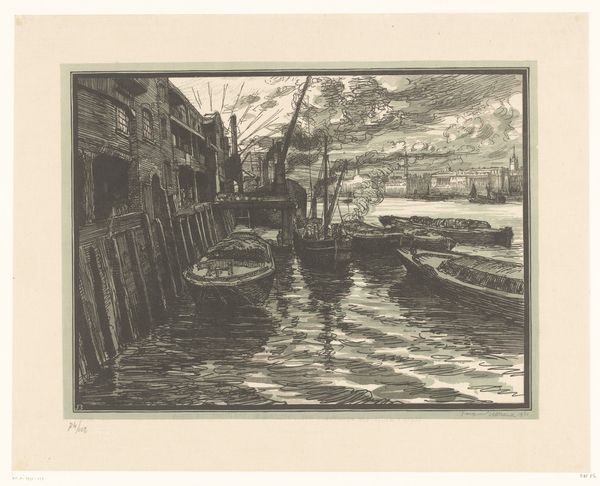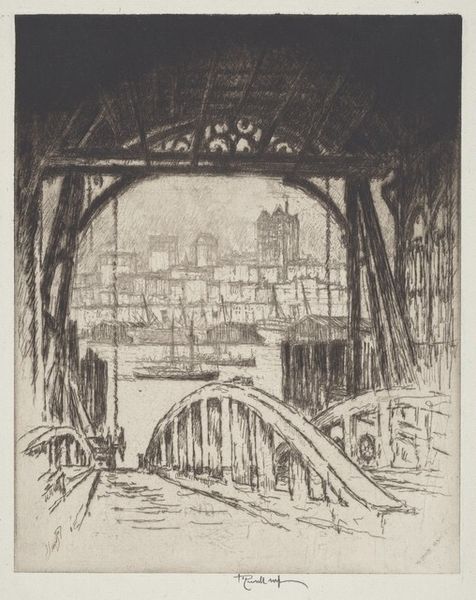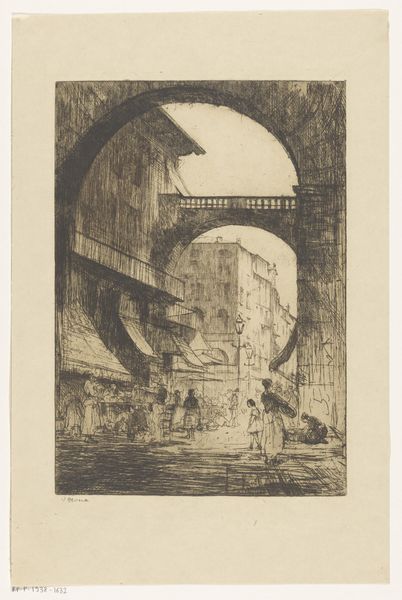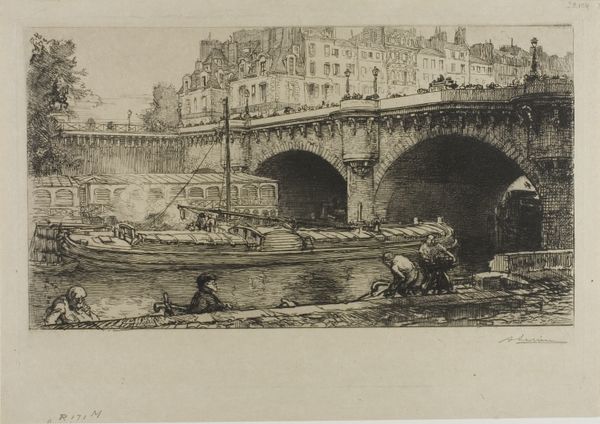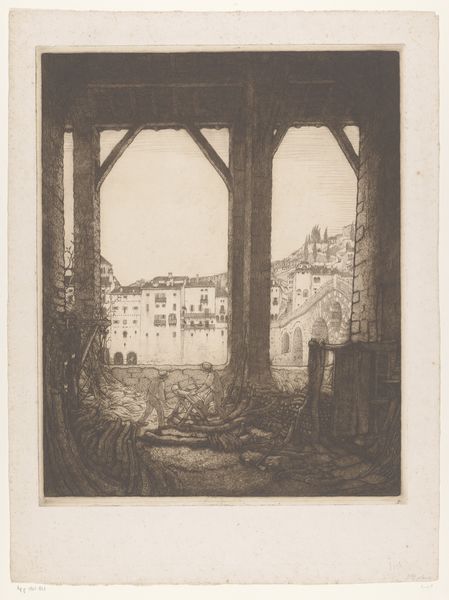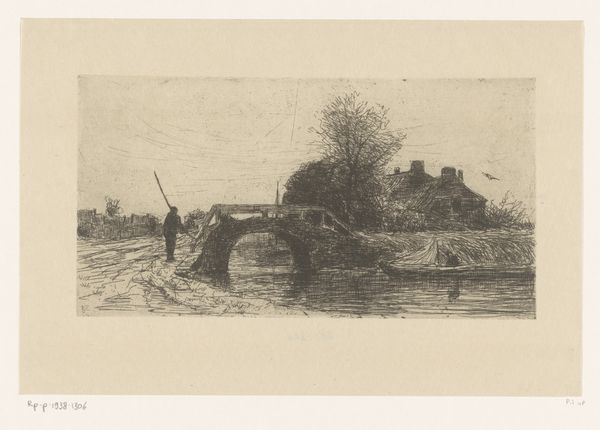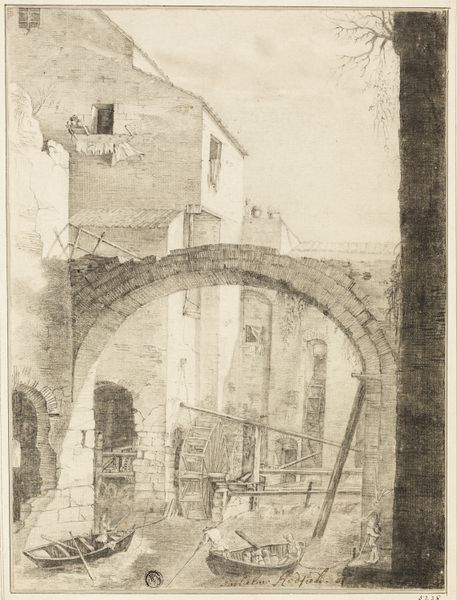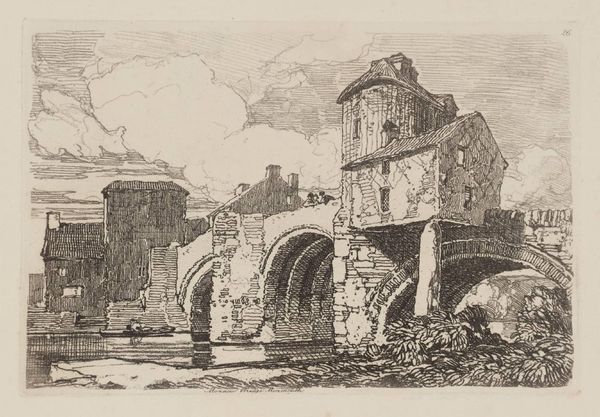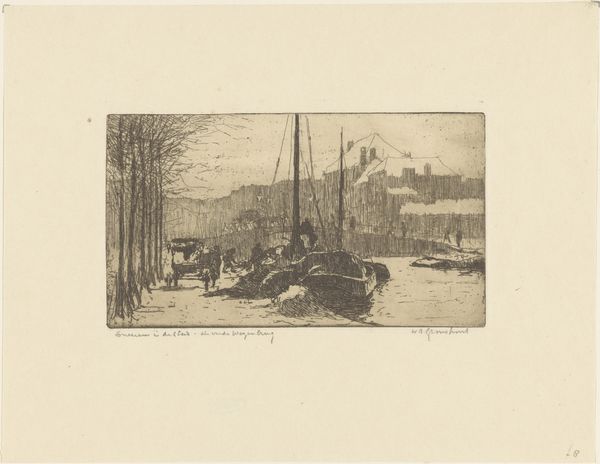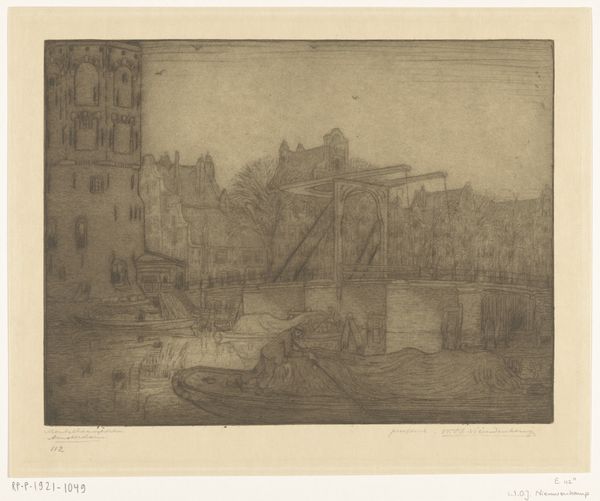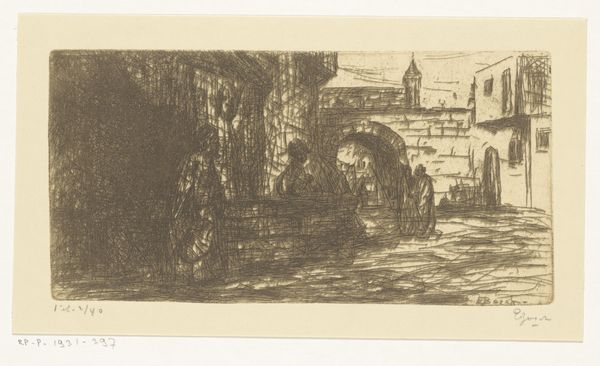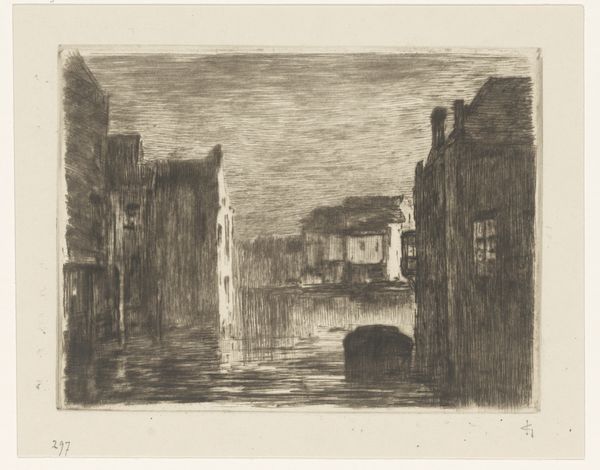
Archway, Pont Nôtre-Dame, Paris, from "Etchings of Paris" 1853
0:00
0:00
Dimensions: plate: 6 x 7 11/16 in. (15.3 x 19.5 cm)
Copyright: Public Domain
Editor: Here we have Charles Meryon’s etching, "Archway, Pont Nôtre-Dame, Paris, from 'Etchings of Paris'," created in 1853. It has a wonderfully gloomy, romantic feel to it. What captures your attention when you look at this piece? Curator: What strikes me is the artist's choice of perspective. He situates us beneath an archway, peering out at another bridge, the Pont Nôtre-Dame. How does this framing impact your reading of the image? Is it simply aesthetic, or does it suggest something about our position as viewers, perhaps commenting on social structures? Editor: It's a little like looking out from a hidden place. The first bridge is so dark and rough and feels like a boundary of some sort, or maybe a division between social strata in mid-19th century Paris? Curator: Precisely. Meryon was known for depicting the rapidly changing urban landscape of Paris. The city was being reshaped, displacing many. Consider the role of bridges: they connect, but also, like archways, they can demarcate boundaries. Who had access to the beautiful cityscape beyond, and who was stuck in the shadows beneath? And also who is crossing to where? Editor: That’s a perspective I hadn't considered. The sharp contrast definitely seems to speak to issues of access and privilege. Curator: Consider, too, the etching technique. The deep lines and shadows create a sense of unease, a "dark romanticism" perhaps, which contrasts with the emerging modernity of the city. Does it glorify or critique the Parisian landscape? Editor: I think it's both, romanticising a disappearing world but also lamenting it in a way, almost like he's making a political statement with his art. I see so much more now!
Comments
No comments
Be the first to comment and join the conversation on the ultimate creative platform.
